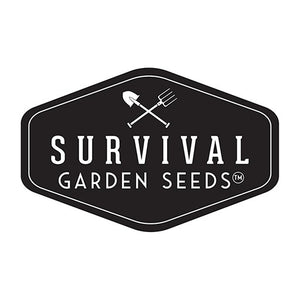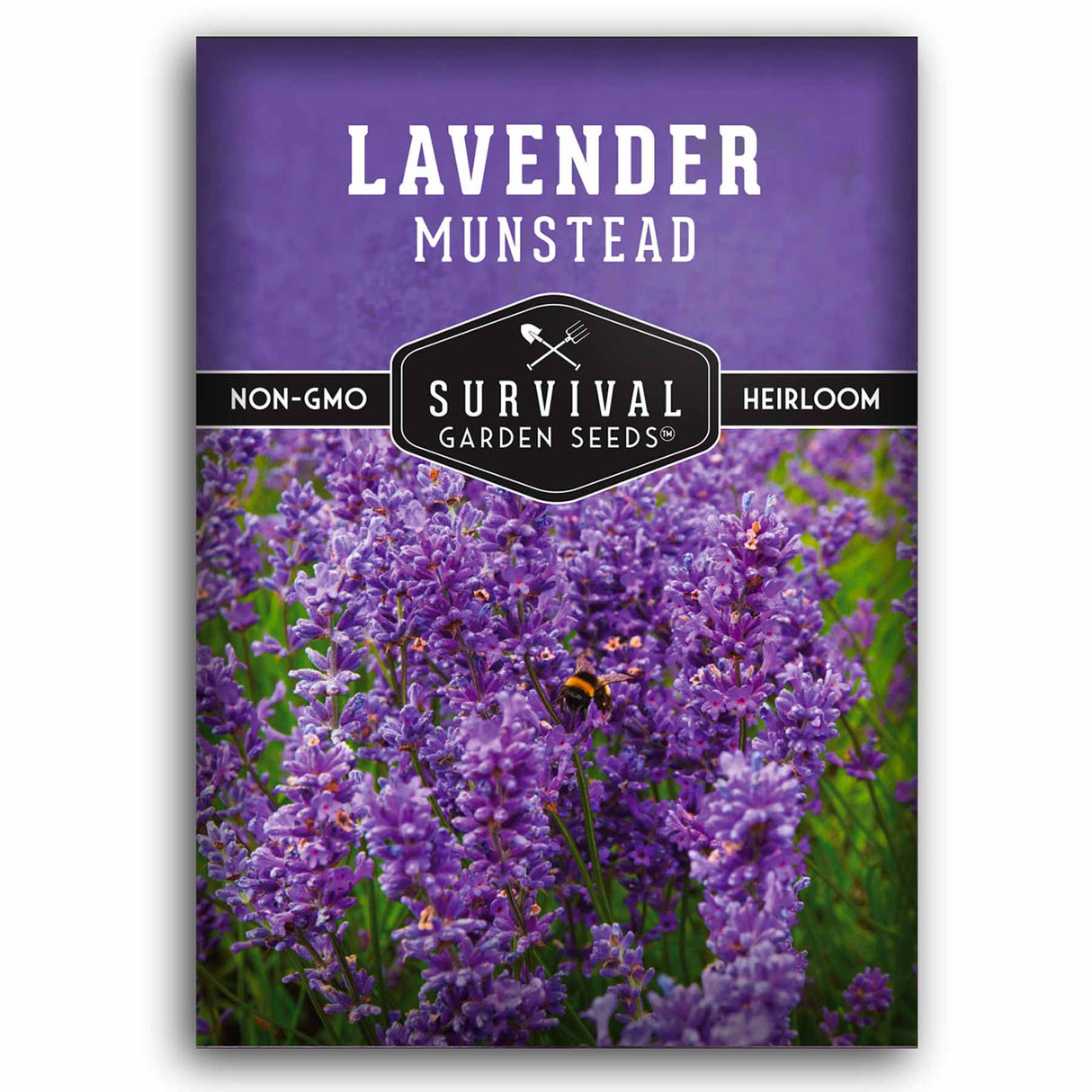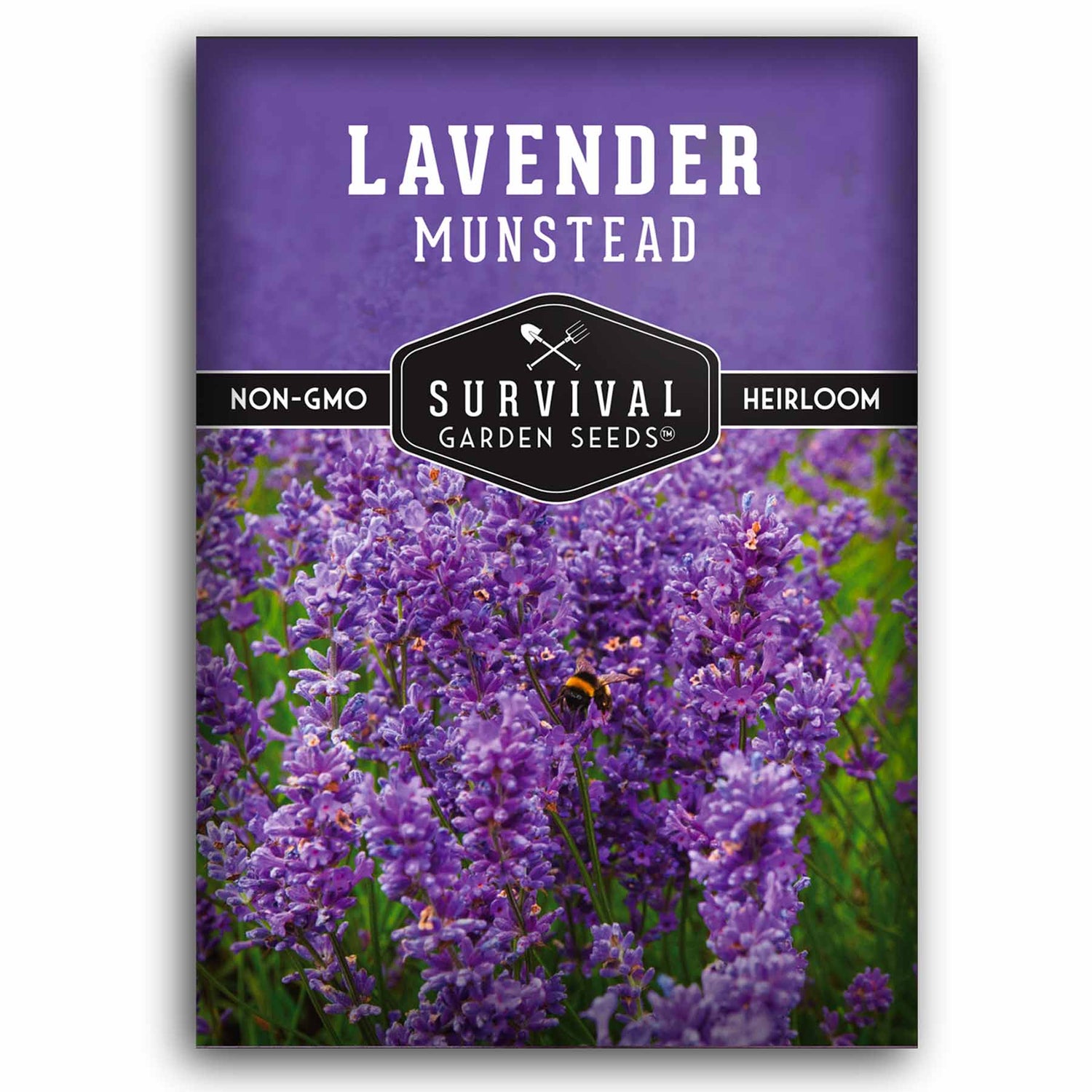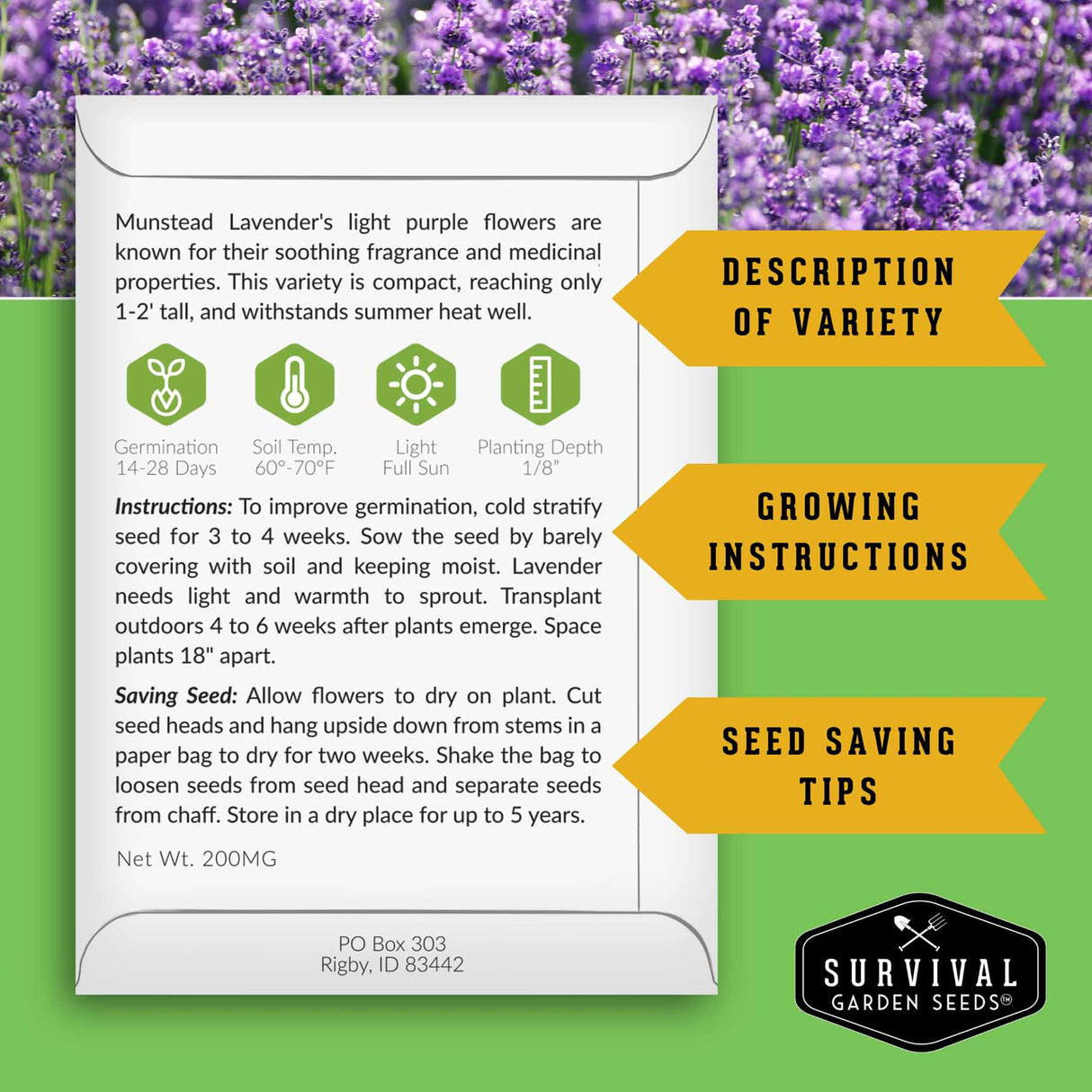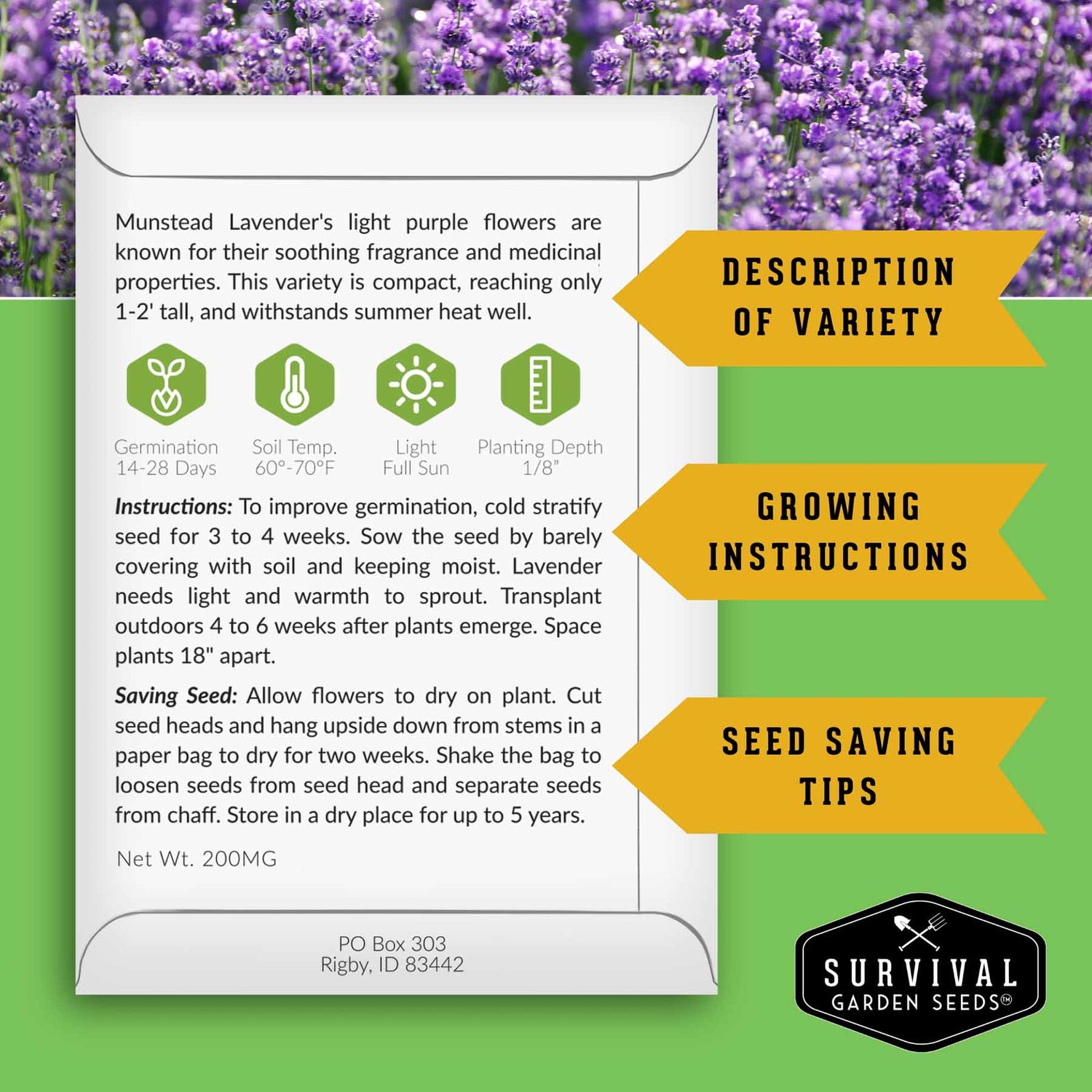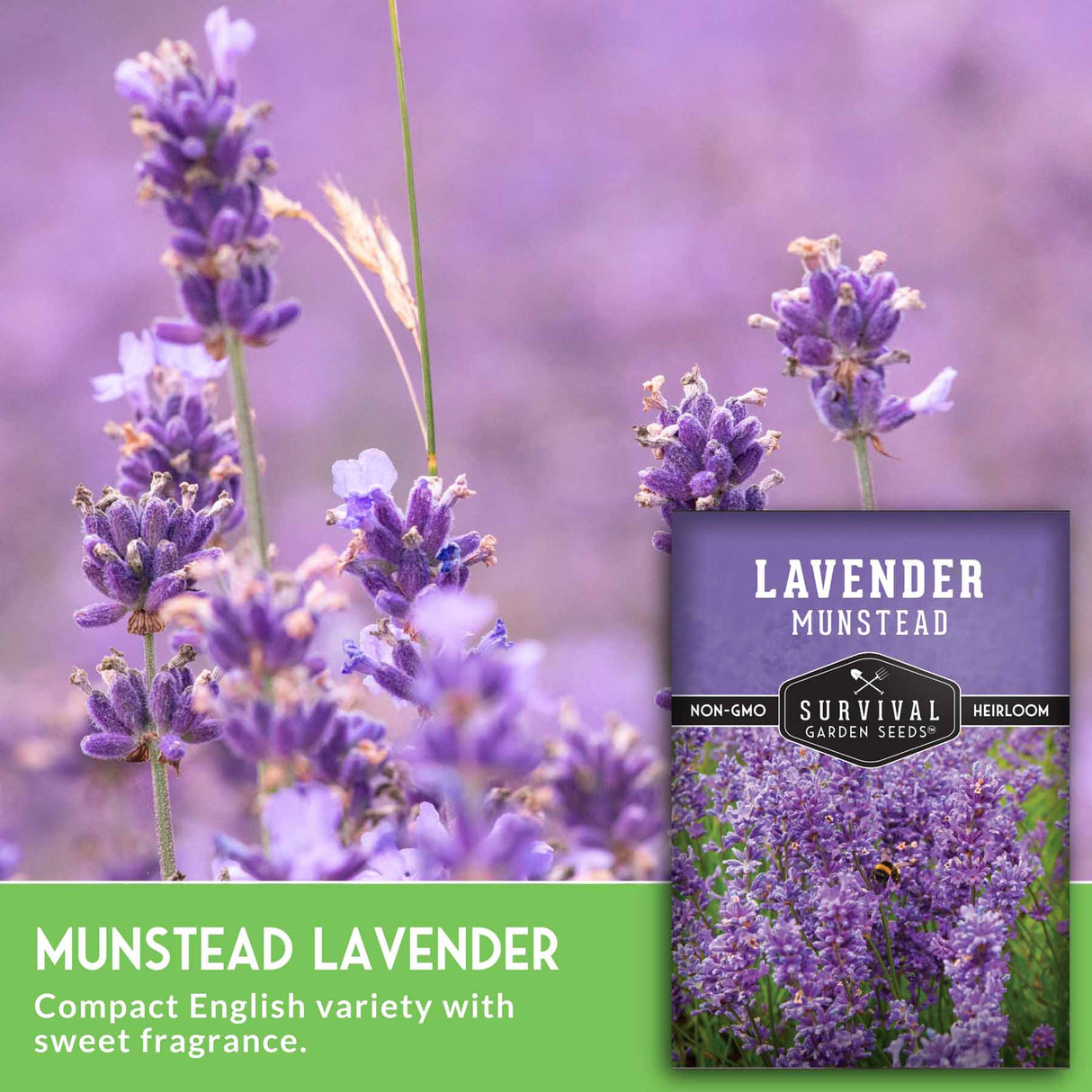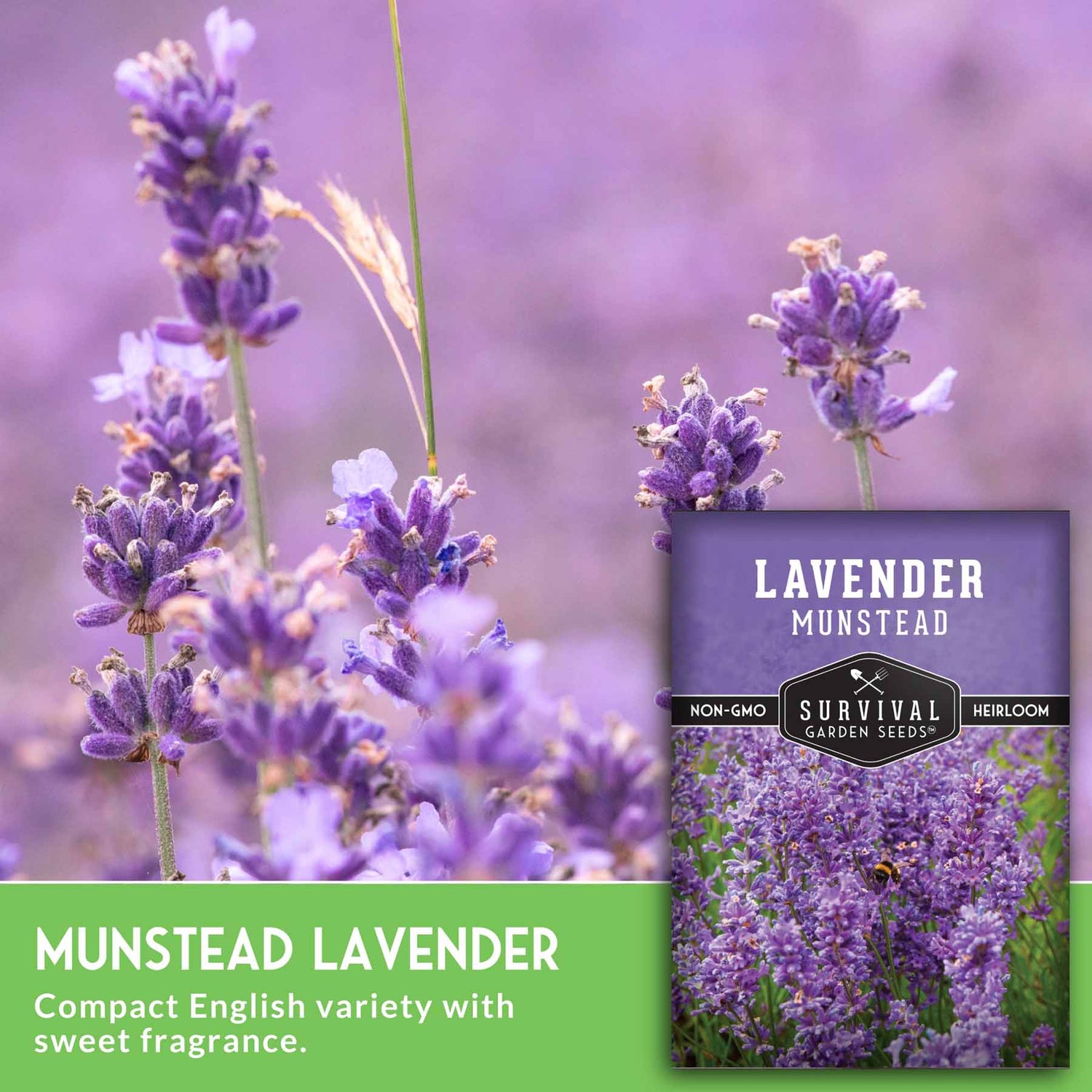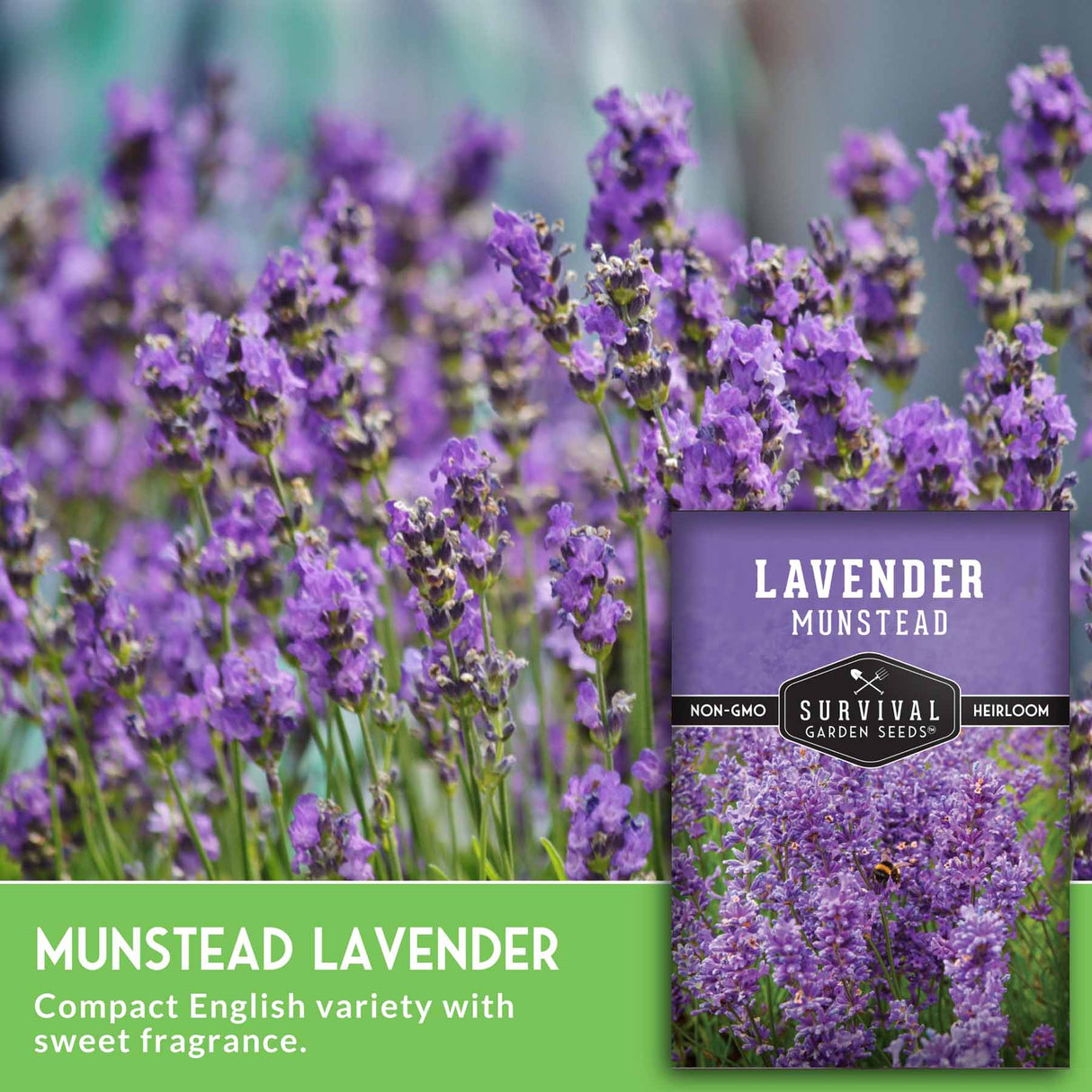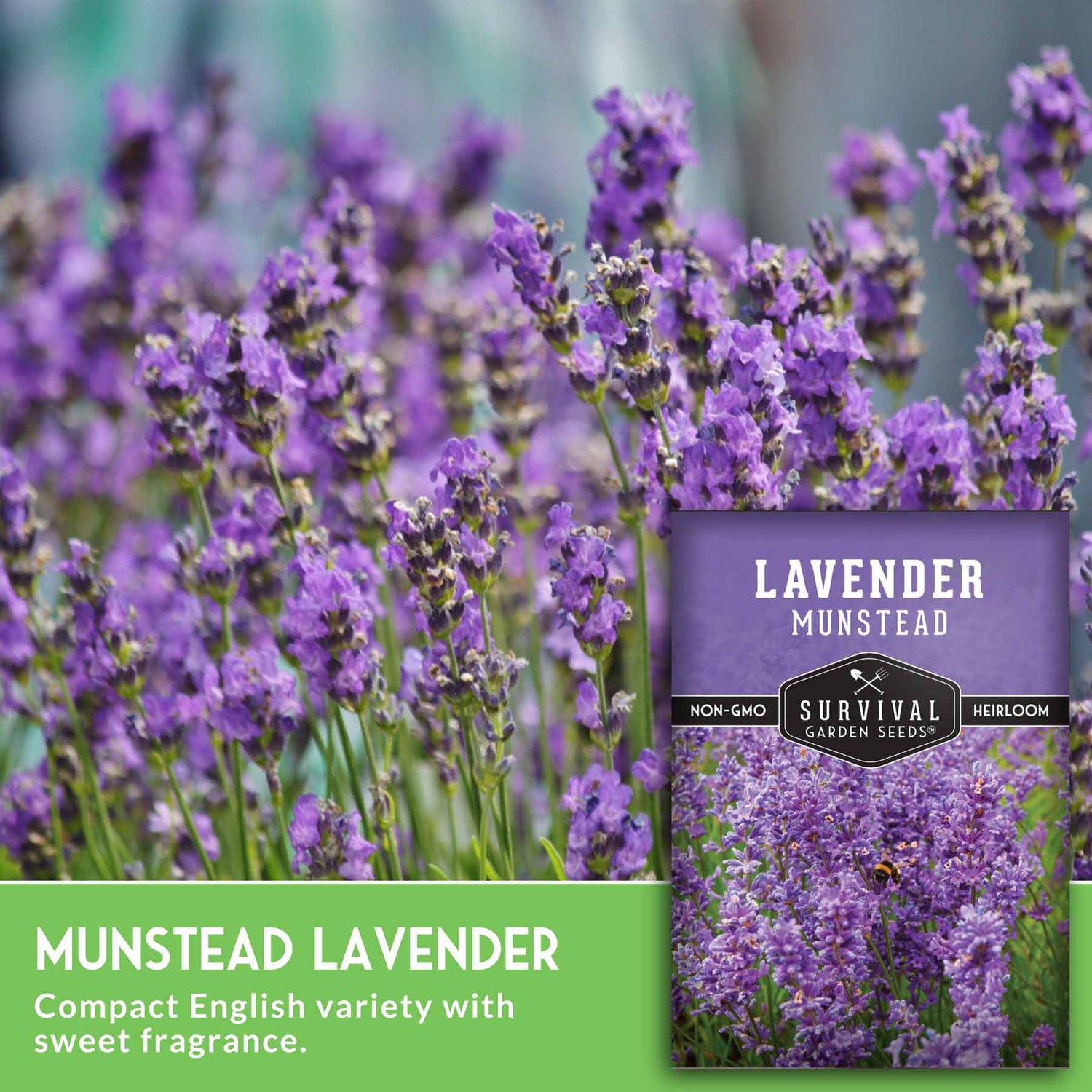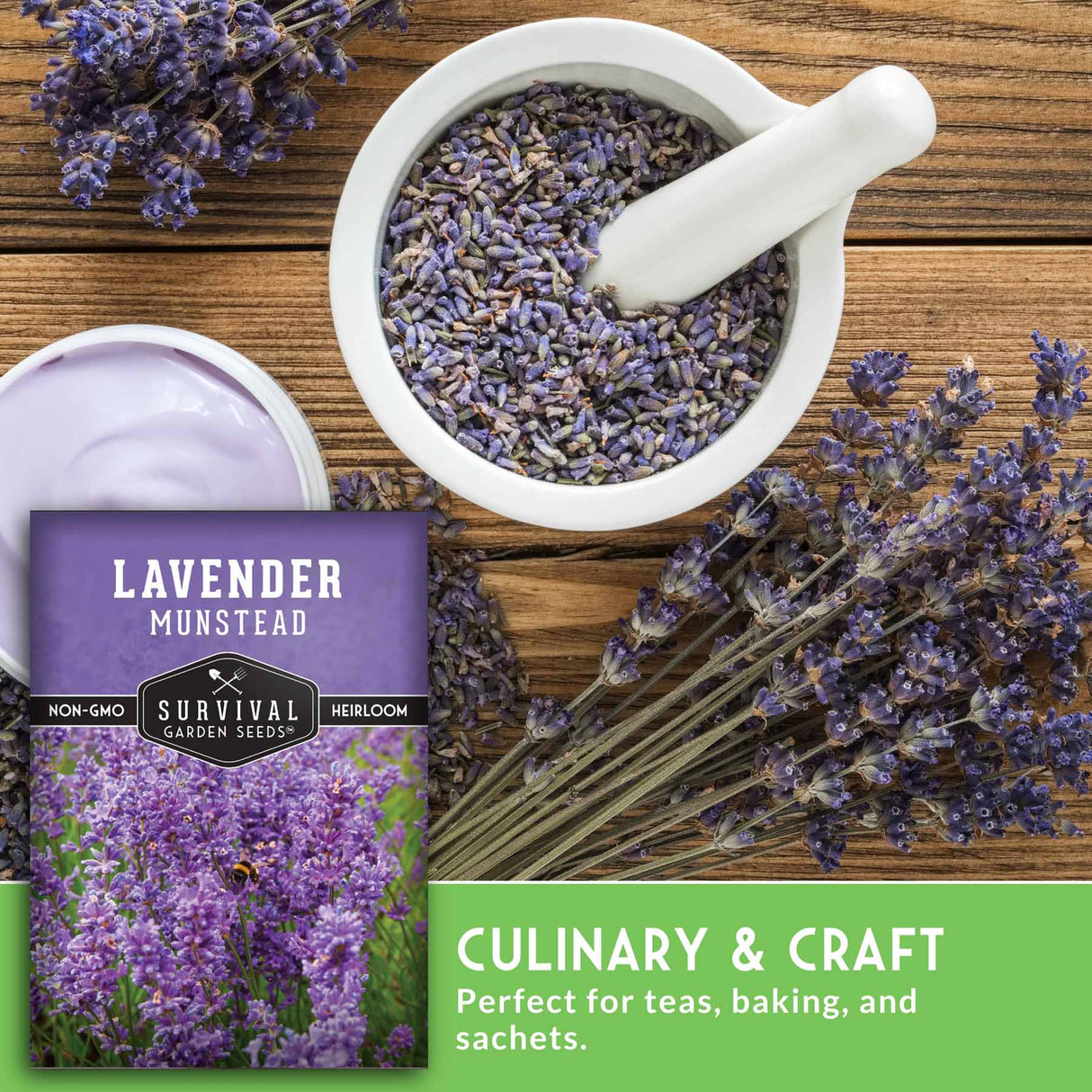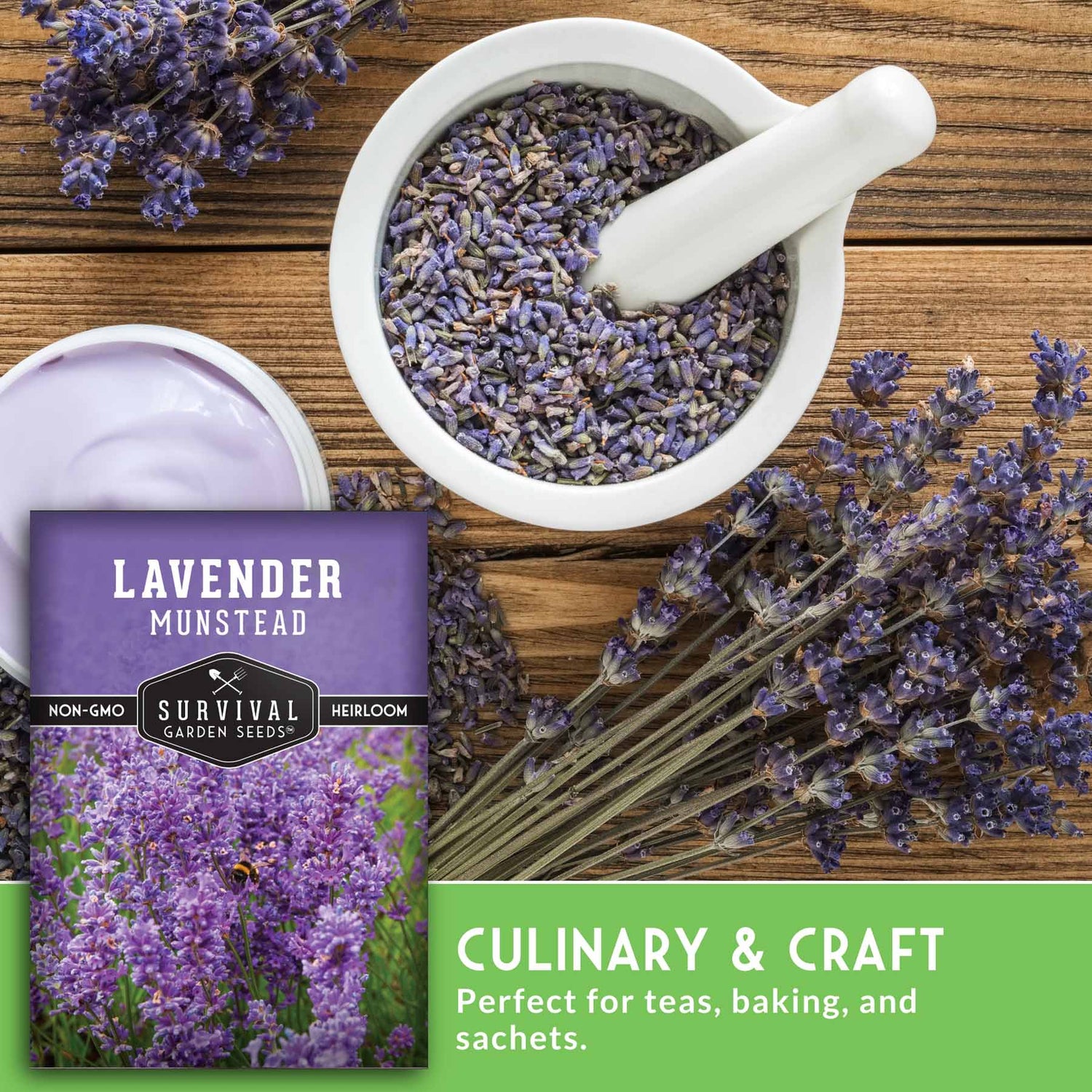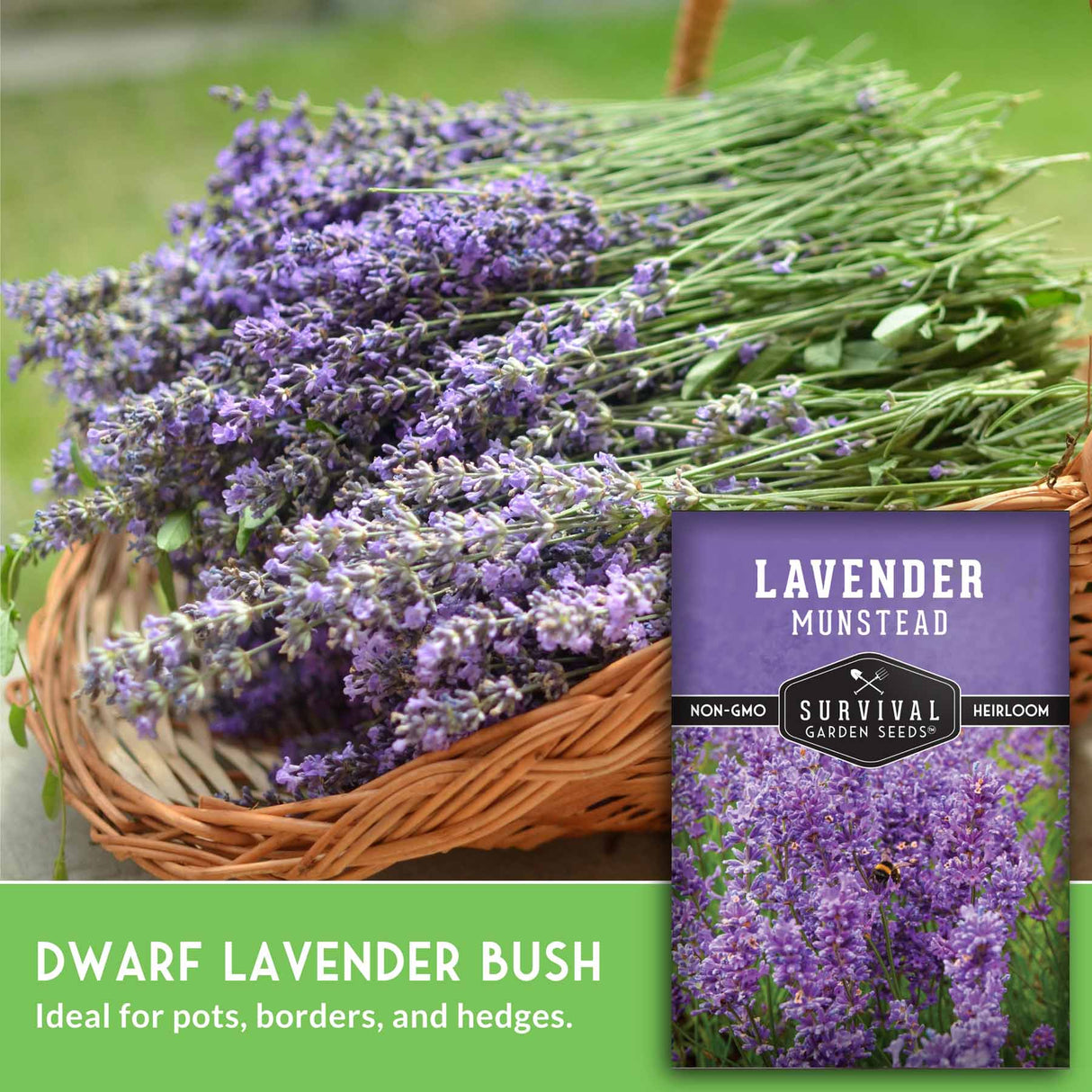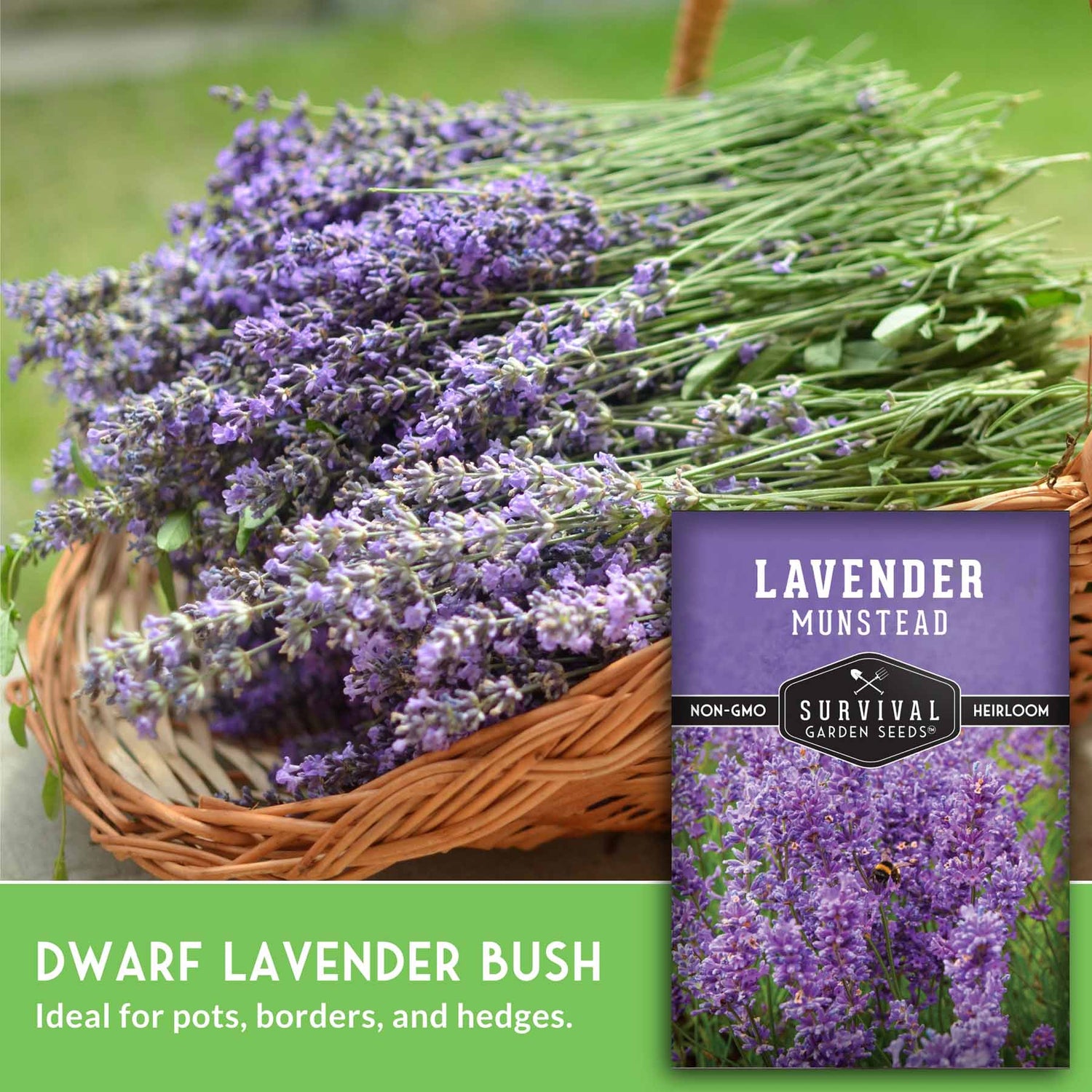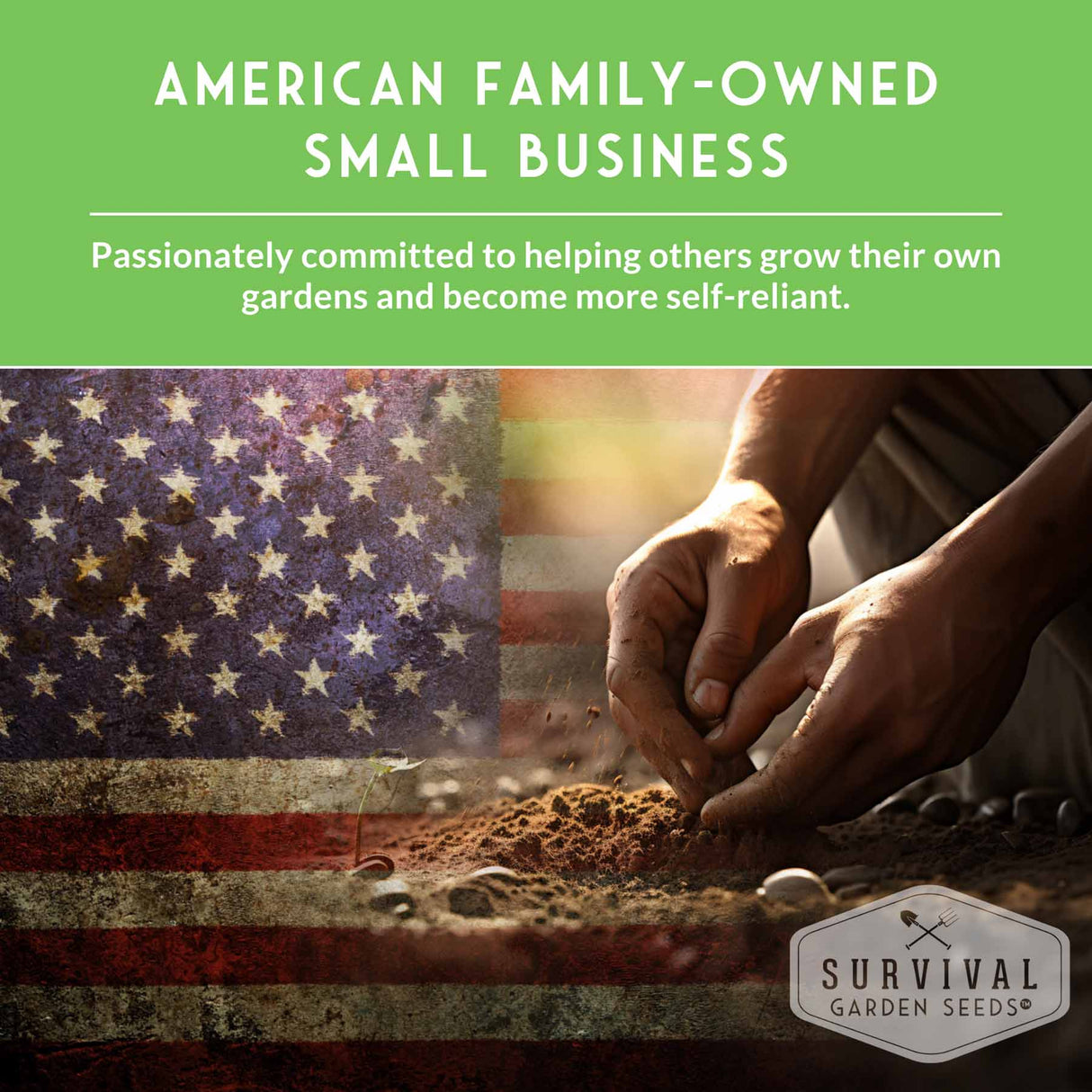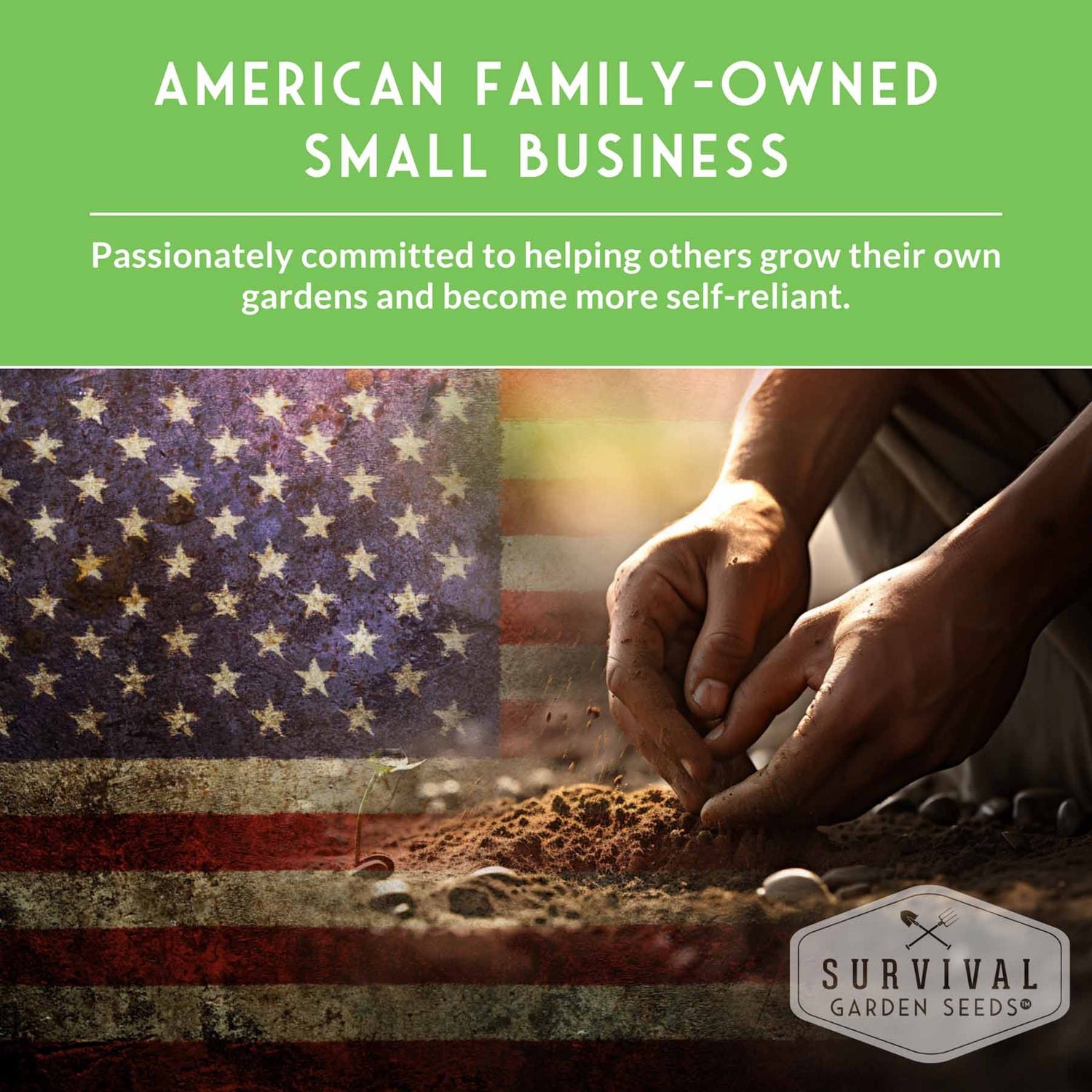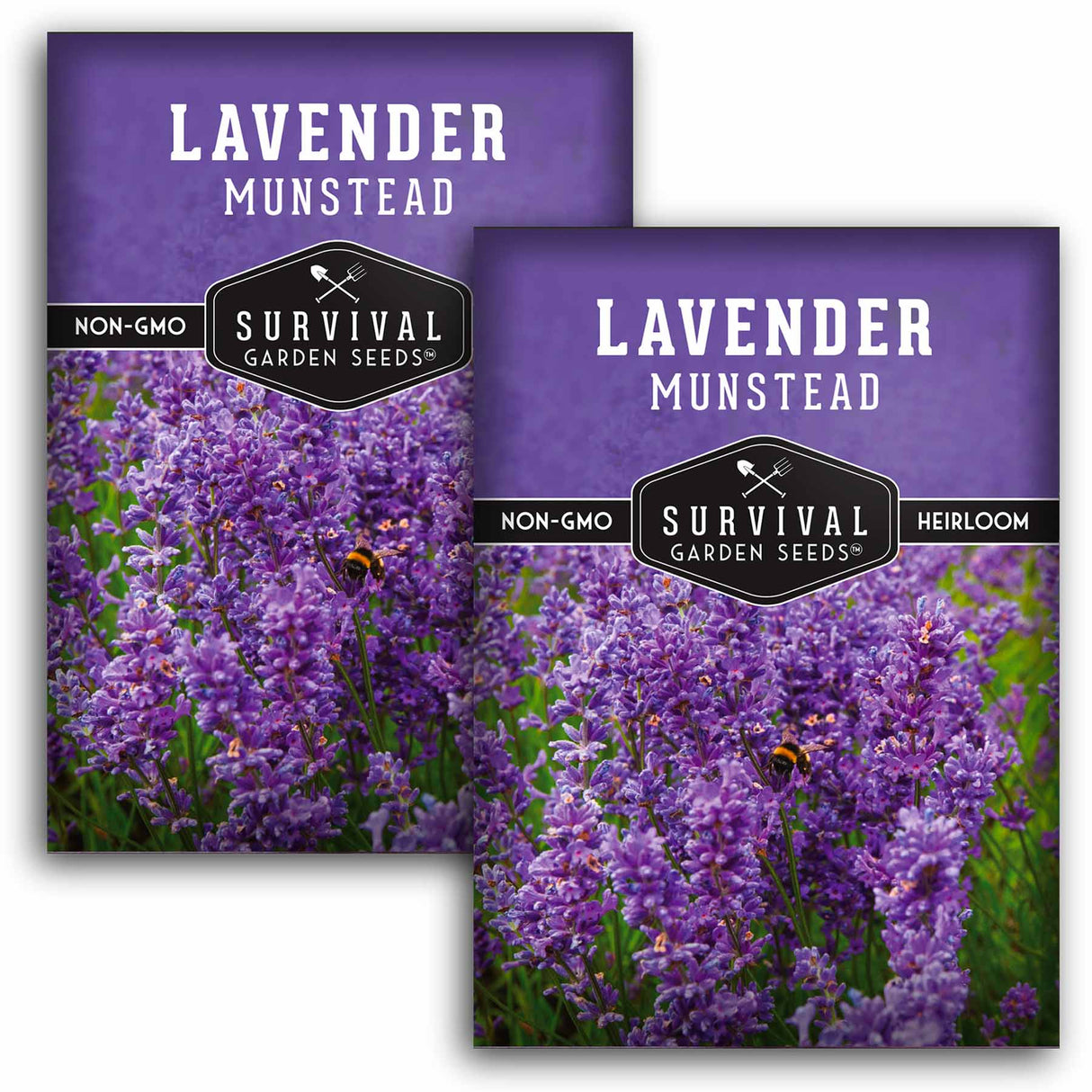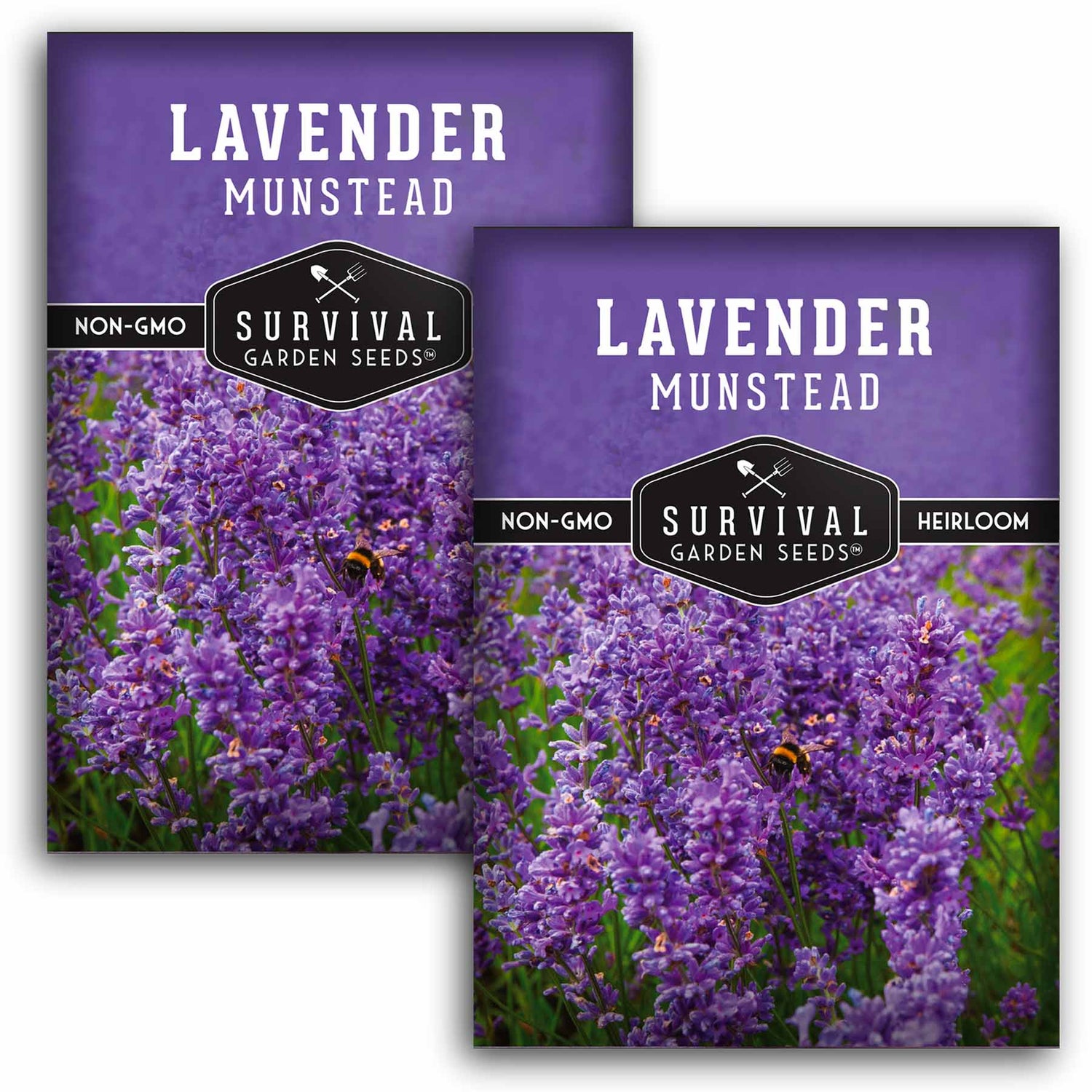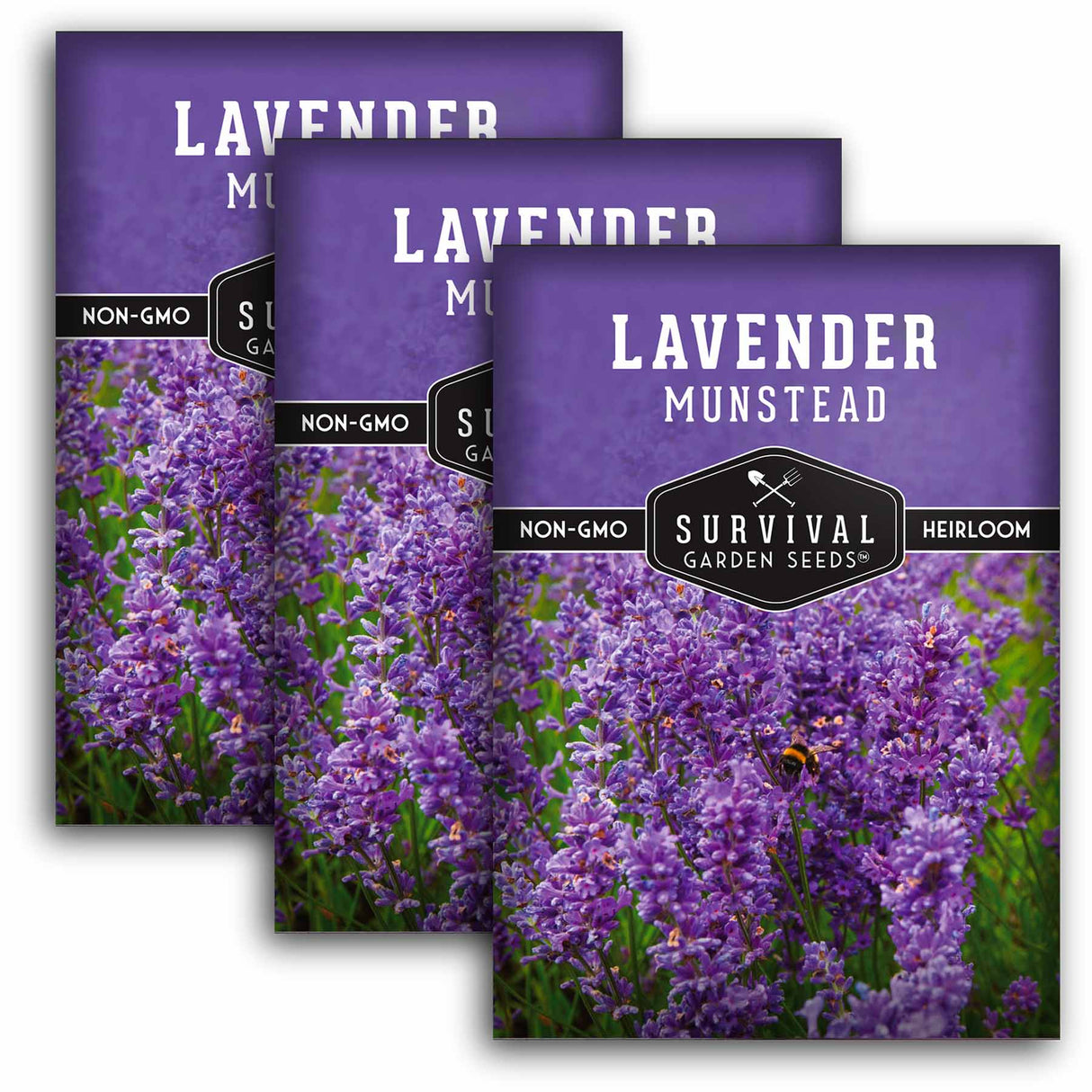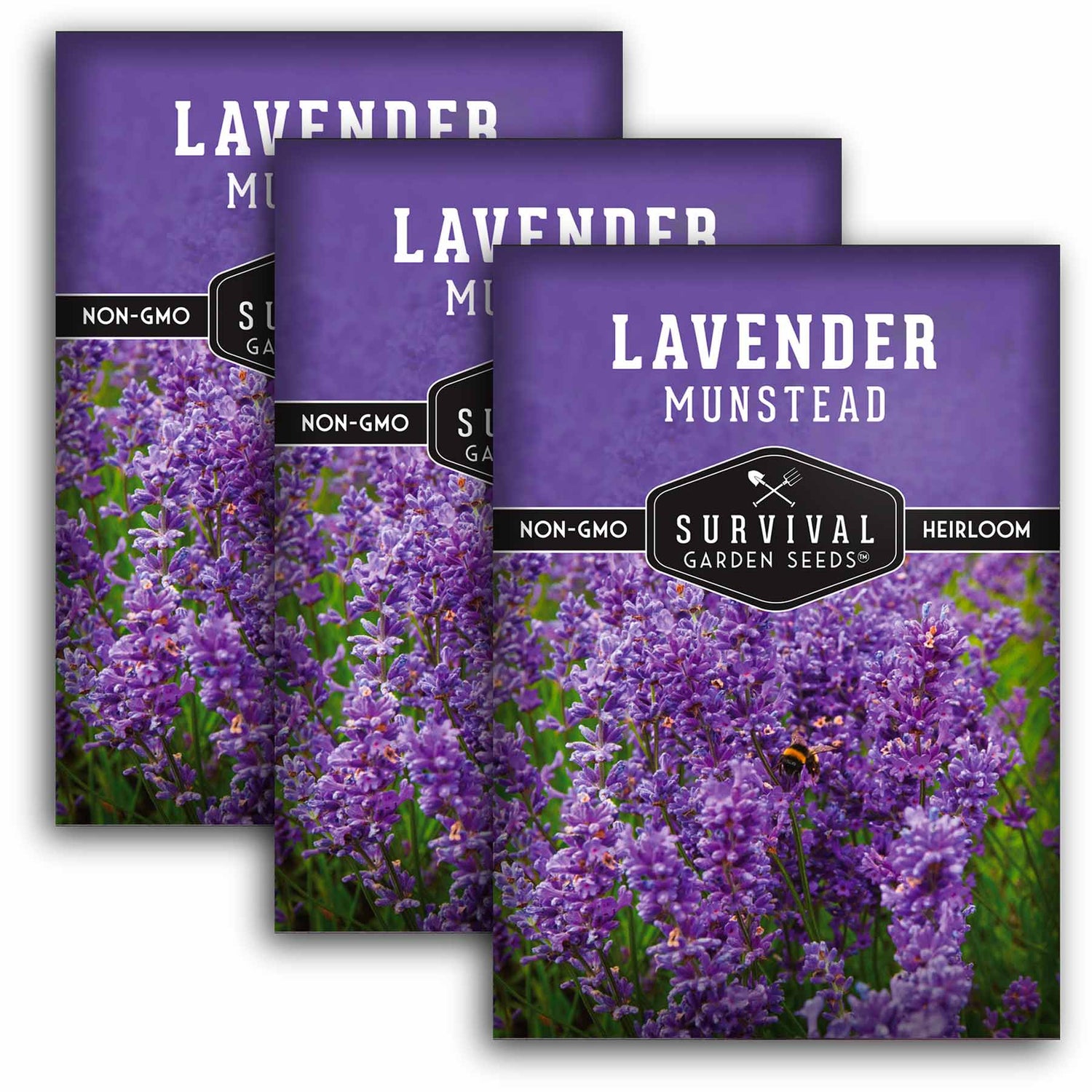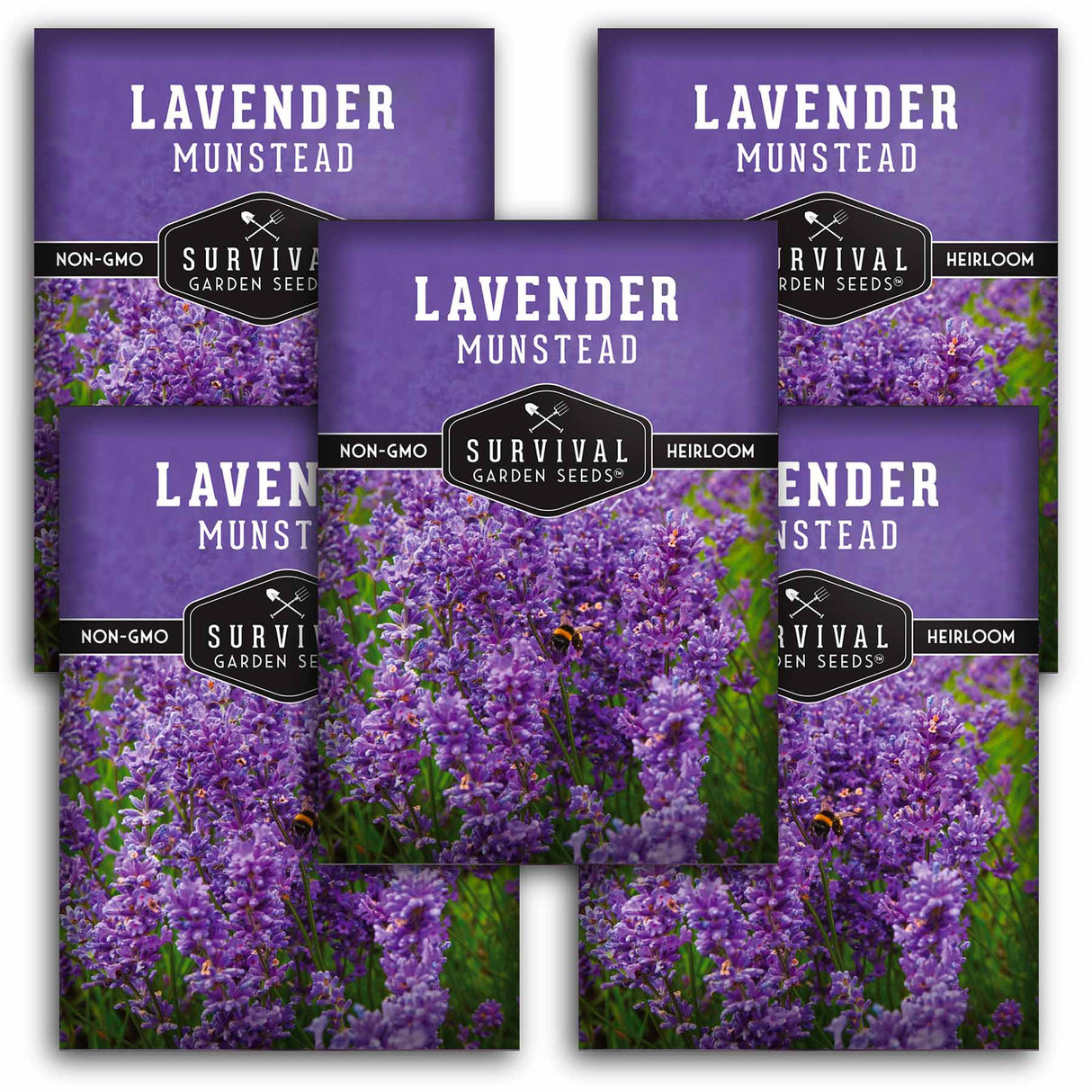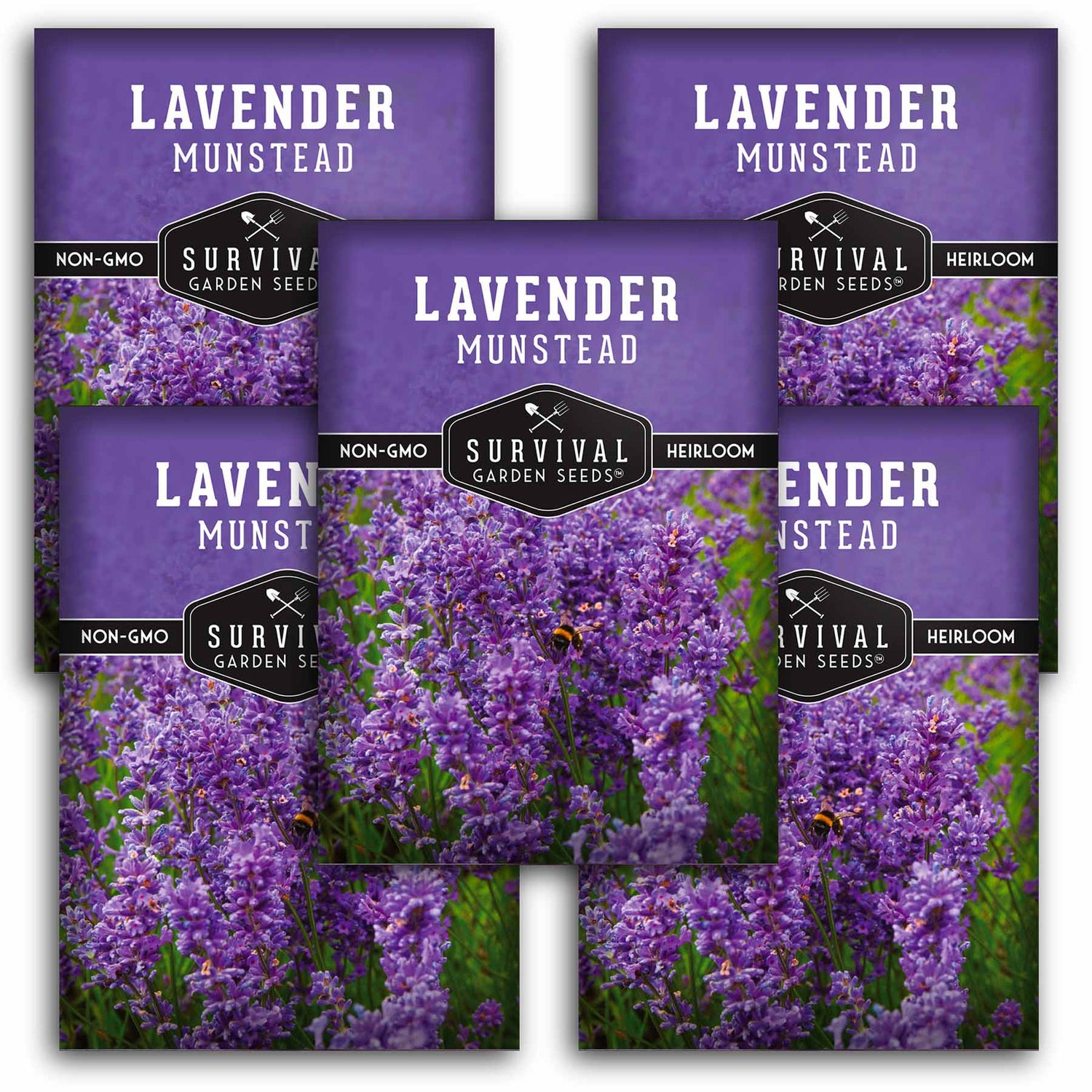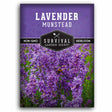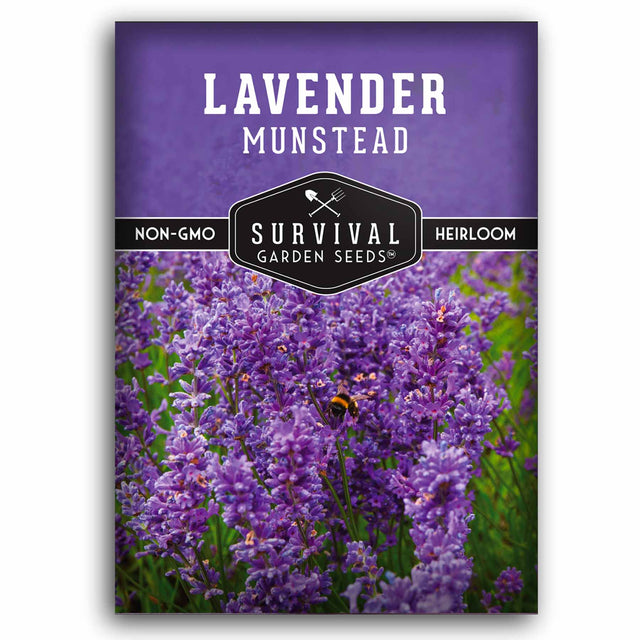Munstead English Lavender Seeds – Compact Heirloom Lavandula angustifolia for Containers, Fragrant Gardens, and Culinary or Craft Use
Heirloom - Non-GMO - Reliable Germination
Munstead English Lavender Seeds – Compact Heirloom Lavandula angustifolia for Containers, Fragrant Gardens, and Culinary or Craft Use - 1 Packet is backordered and will ship as soon as it is back in stock.
Couldn't load pickup availability
Bring timeless fragrance and beauty to small spaces with Munstead English Lavender Seeds (Lavandula angustifolia) — a beloved heirloom variety prized for its compact form, sweet aroma, and early blooms. This dwarf perennial lavender delivers the same charm and resilience as larger varieties, perfectly scaled for containers, patios, and cozy garden borders.
Perfect for Containers and Gifts:
Growing just 12–18 inches tall, Munstead Lavender is ideal for gardeners short on space or seeking a fragrant accent for pots and window boxes. Its aromatic flowers and silvery-green leaves lend themselves beautifully to sachets, teas, baked goods, and homemade soaps — making this variety a thoughtful gift for plant lovers, cooks, and crafters alike.
Growing Munstead Lavender:
Lavender seeds germinate slowly, so patience is key. Cold stratify seeds before sowing, then plant in well-draining soil with bright light. Sprouts typically appear within 14–28 days. Once established, Munstead thrives in full sun and dry conditions, showing excellent performance in USDA Zones 5–9 with winter protection in colder regions.
Compact, Hardy, and Aromatic:
Munstead Lavender produces early violet-purple blooms from late spring through early summer. Its rounded, tidy growth habit makes it perfect for edging pathways or enhancing patio containers. Drought tolerant, deer resistant, and pollinator-friendly, this long-lived herb rewards gardeners year after year with beauty, fragrance, and versatility.
Why Customers Love Munstead Lavender:
- Compact, early-blooming English lavender variety
- Perfect for containers, patios, and small garden spaces
- Edible and aromatic flowers for teas, baking, and crafts
- Hardy perennial that attracts bees and butterflies
- Low-maintenance and drought tolerant once established
How to Grow Munstead Lavender:
- Stratify: Chill seeds in a damp paper towel inside a sealed bag for 3–4 weeks before planting.
- Sow: Press lightly into well-draining soil, keeping surface moisture even.
- Light: Provide bright light or grow under lamps until seedlings appear in 2–4 weeks.
- Transplant: Move outdoors after frost into full sun and sandy, well-drained soil.
- Care: Water sparingly and prune lightly after bloom to encourage compact growth.
Net Wt. 200MG
Heirloom Herb Seeds
All of our seeds are open-pollinated, non-GMO, heirloom varieties with tested germination rates
Specifications
Specifications
-
Botanical Name
-
Seasonality
-
Planting Zones
-
Light
-
Soil Temp for Germination
-
Germination Time
-
Planting Depth
-
Plant Size
-
Days to Bloom or Harvest
-
Growing Instructions
-
Seed Saving Instructions
-
Seed Count (approximate)
Payment & Security
Your payment information is processed securely. We do not store credit card details nor have access to your credit card information.
Why Choose Survival Garden Seeds
At Survival Garden Seeds, we believe in preparing today for tomorrow’s peace of mind. That’s why we offer only heirloom, non-GMO, and untreated seeds you can trust to nourish your family and support a sustainable lifestyle. As a family-owned American company, we’re committed to providing seeds that grow strong and true—helping you cultivate health, resilience, and beauty in your garden.
Frequently Asked Questions
What are heirloom seeds?
What are heirloom seeds?
Heirloom seeds are the types of seeds your grandparents grew. These varieties have been passed down from generation to generation. They’re old reliable open-pollinated varieties that aren’t typically grown commercially. Instead, they have a rich history that predates modern breeding techniques.
You can learn more about open-pollinated, heirloom, and non-GMO seeds in our Survival Garden Training blog.
How do I know my seeds are fresh?
How do I know my seeds are fresh?
Every seed packet includes a "packed for" date, and we germination test each seed lot before packaging to ensure you receive viable, high-quality seeds that are ready to grow.
Are your seeds treated?
Are your seeds treated?
No, we do not pre-treat our farmer seeds. All of our garden seeds for sale are untreated, open-pollinated, non-GMO, and heirloom varieties. They are kept in temperature-controlled cooler storage until they are packed and shipped to keep them pest and disease-free.
In what zones can I grow your seeds?
In what zones can I grow your seeds?
The seeds in our collections are specifically chosen from varieties that can be successfully grown from Zone 3 to Zone 10 USDA Hardiness Zones. However, individual varieties have specific needs to thrive in different environments. Each seed pack has optimal temperatures for germination and instructions on seed starting. Consult local frost dates to plan your garden and get the most out of your seeds.
What is the shelf life of these gardening seeds?
What is the shelf life of these gardening seeds?
Most seeds remain viable for 3 to 5 years or longer when stored properly. Check your seed packet for specific varieties. For best results, keep your seeds in a cool, dry place away from direct sunlight and moisture. Store them in an airtight container in a consistent temperature environment—a refrigerator or cool basement works well. Proper storage helps maintain germination rates and extends seed life well beyond the packed date.
Where are Survival Garden Seeds sourced?
Where are Survival Garden Seeds sourced?
The majority of our seeds are sourced in the United States, with a few exceptions when the seed is difficult to source domestically. Whenever we do have to source outside of the US, we ensure our seeds are safe to grow, non-GMO varieties that meet our standards for germination and reliability.
